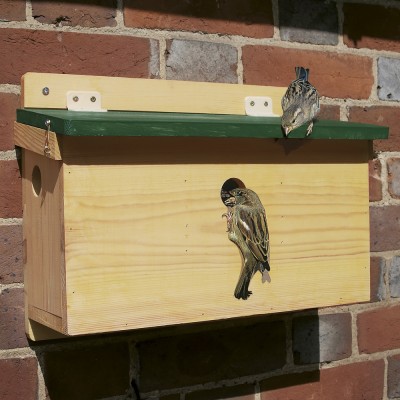
There is a shortage of natural nesting sites for birds and this has played a part in the decline of some of the UK’s most iconic species. It’s easy to provide nesting opportunities for birds in our gardens and outdoor spaces, and with spring rapidly approaching, now is the ideal time to start thinking about nest boxes for your local birds ahead of the breeding season.
In this blog, we answer some of the most frequently asked questions about nest boxes – covering where and when to put them up, cleaning and maintenance, how to deal with predators and more.
When is the best time to put up nest boxes?
There really is no ‘best’ time to put up nest boxes. By putting up boxes in the autumn you can provide much needed winter refuges for roosting birds and possibly increase the chance of them staying and nesting there when spring comes around. However, any box erected before the end of February stands a good chance of being occupied if it is sited correctly. Even after February there is still a chance that they will be used; tits have been known to move in during April and house martins as late as July. Therefore, put your nest box up as soon as it is available rather than leaving it in the shed!
Where should I hang my nest box?
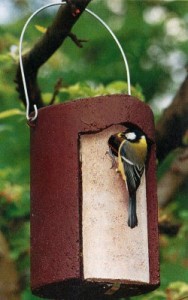
Locating your nest boxes correctly is one of the key determinants in how likely birds are to occupy them, therefore the ‘where’ is much more important than the ‘when’. Nest boxes must provide a safe, comfortable environment and protect the inhabitants from predators and the worst of the weather. This may be difficult to achieve; a safe location out of reach of predators may also be exposed to the weather, so have a good think before you start putting nails in.
Nest boxes can be fixed to walls, trees or buildings, and there are an array of different styles of boxes that suitable for each location. Fixing to artificial surfaces means the growth of the tree does not have to be taken into consideration, which is useful for Schwegler and Vivara Pro nest boxes that can last for at least 20-25 years: a significant amount of time in the life of a small tree. If you’re planning any building work, remember that some bird and bat boxes can also be built directly into walls and roofs.
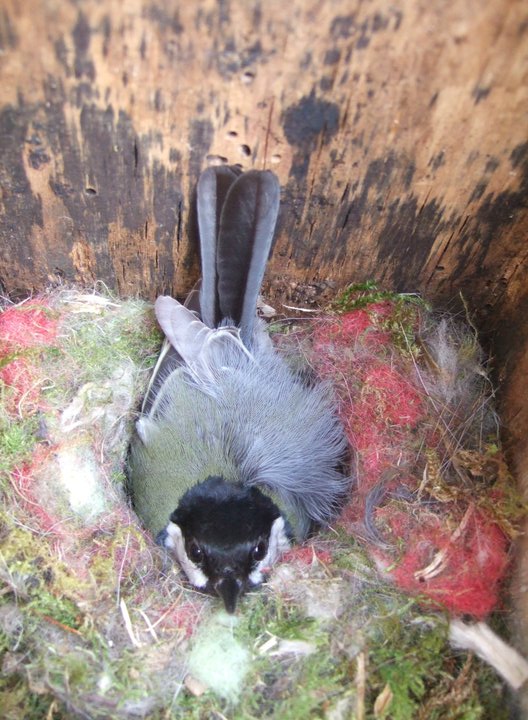
Locating boxes out of the reach of predators can be a challenge (weasels can climb almost anything), but there are things you can do to make it harder for them. Boxes in gardens should be located where cats cannot get to them, and prickly or thorny bushes can also help to deter unwanted visitors. Some nest boxes also have anti-predator designs (e.g. Schwegler’s 1N deep nest box). It is also best to avoid nest boxes that have a combined bird feeder and boxes should not be sited too close to the bird feeders in your garden. Visitors to the feeder may disturb the nesting birds and the feeder could attract unwanted attention from predators.
The height of the box is not crucial for many species, however, by placing it at least two metres off the ground you can help prevent predators and human interference. The direction of the entrance hole should be away from the prevailing wind and it is beneficial for there to be a clear flight path to the box. Crucially, the box should be also be sheltered from the prevailing wind, rain and strong sunlight, so in most UK gardens aim for a northerly, easterly or south-easterly aspect. If possible, position the box at a slight downward angle to provide further protection from the rain. There are a few species do have specific requirements for where a box should be sited (e.g. house martins and swifts nests need to be sited under the eaves); please see our product details for particular instructions for different species.
Wherever you position the box, try to ensure that you can still get access to it for maintenance. And finally, if possible, try to put it somewhere where you can see it, or invest in a nest box camera, so as to maximise your enjoyment of watching wild birds in your garden.
Is there anything else I can do to deter predators?
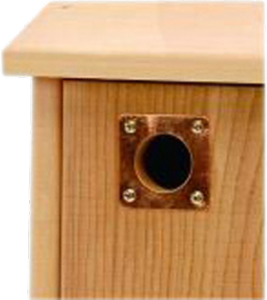
As already mentioned, location is the most important factor when trying to deter predators. Whilst some mammals can climb walls, a blank wall is fairly inaccessible so can be a good choice. Ensure that the box cannot be reached by a single jump from a nearby branch or the ground.
Box design can also help deter predators. An entrance hole reinforced with a metal plate will prevent grey squirrels and some avian predators from enlarging the hole and gaining access to the nest. Woodcrete and WoodStone boxes are too hard for any predator to break through. However, you can also reinforce a nest box yourself with metal protection plates or provide additional protection with prickly twigs. Deep boxes may prevent predators reaching in and grabbing nest occupants, although some tits have been known to fill up deep boxes with copious quantities of nesting material. If you’re using an open-fronted nest boxes, a balloon of chicken wire over the entrance can work well. If you live in an urban area, cats are likely to be the most common predator. Gardeners have long since used various methods to exclude these unwanted visitors, such as pellets and electronic deterrents, all with varying degrees of success.

How do I manage the nest box?
A well-designed nest box will only need one annual clean in the autumn. It is important not to clean out nest boxes before August as they may still be occupied. Wait until autumn and then remove the contents, scattering them on the ground some way from the box to help prevent parasites re-infesting the nest box. Wear gloves and use a small brush or scraper to remove debris from the corners. Boiling water can be used to kill any parasites remaining in the box, but remember to leave the lid off to dry out fully. Do not wait until the winter to clean out nest boxes as birds may already be roosting in them. The tit species do a thorough clean out of any old nesting material or roosting debris before they begin nesting again, but it will save them energy if you can help out.
How many nest boxes do I need?
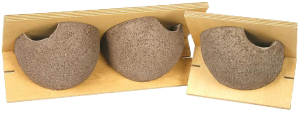
The exact amount of boxes required will depend on the space available, species and the surrounding habitat. As a very general rule of thumb, start with ten assorted small boxes per hectare (ensure uniform spacing between boxes). Keep adding several more boxes each season until some remain unused and hopefully you’ll hit on the correct density of boxes. However, even if you only have space for one box it is still worthwhile, providing it is suitably located, as many UK bird species need all the additional nesting habitat they can get.
You can browse the full range of nest boxes we sell online and, if you’re keen to find out more, check out the BTO Nestbox Guide, which is packed with essential information.
If you are interested in installing a nest box camera into one of your bird boxes, take a look at our “How to choose the right nest box camera” article for more information on choosing the model that’s right for you.
Further information about individual nest boxes, including advice on positioning, can be found alongside each nest box in our range. If you have any other questions or would like any further advice, then please get in touch with our team of Wildlife Equipment Specialists.

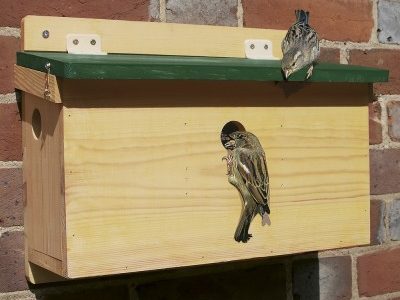
hi,i put up a box that is around 10″x 10″x 10″with an entrance hole around 2″dia on a shelted east facing stone house wall around 25ft high it as a overhanging roof fully water proof and very hard for any thing to get to around 8 years ago but it as never been used once by any birds i thought the entrance might be too big so i made it around 1″diameter 2 years ago but still no takers so whats the problem my garden gets loads of birds of all kinds,also 2 years ago robins nested in a nelly moser climber around 6 feet from the ground and all was ok so i made a small nest box with a small entrance hole fixed it up in the same climber but a bit higher but again still no takers? black birds/sparrows/blue tits/the occasional wren/magpies/jackdors/crows/and i have had a visit from woodpeckers a couple of times but apart from the robin no other nesting there are bats flying around at night but they dont seem to roost around my house we also used to get loads of starlings but not many over the last couple of years so as we get loads of birds why dont they use the nest boxes or the horthorn edge around the north east side of the garden,one other point my garden is not very big its around 40ft x 40ft any tips or advice will be most welcome,many thanks, s buckley.
Sometimes this happens, but you may find when you clean or inspect the box in the early winter a few droppings in the bottom indicating that unbeknown to you they have used it to roost. Also, you didn’t say where you are, but if you have plenty of natural nest sites around you, or just too many natural predators in the area like hawks, squirrels, woodpeckers, or domestic pets that they might feel would not be good for boxed or landed young this may put them off a bit whether the box is in direct reach of these or not. Starlings are in severe decline due to loss of habitat, they rely on houses with eaves, as do sparrows, also on the Red List, flocks are much smaller in numbers now, sadly due to loss of habitat and ‘tidy’ houses, built with no eaves. There are also nest box designs for specific birds, and also bird homes with an ‘escape’ back door, to make birds like Robins feel more secure in nesting, Schwegler I think might still do these, and have a look at the RSPB site, generally the entrance hole and height from the base to the hole is an important factor too. All the best!
I’ve just purchased 4 bird houses for my garden.
Natural wooden bird house
12cm x 11cm
Made from durable plywood
Hanging loop
I only have an 8ft high fence all around a south facing garden.
Can you please advise me best to keep the birds warm and safe in these houses in winter? And what best to feed them?
Many thanks
Donna
I really like that you said that it doesn’t really matter when you put up a birdhouse. As you said, whether it is winter or summer, any time is a good time for a birdhouse. I’m thinking about putting one up at my home. But, I don’t know much about building it on my own. Do you have any tips about buying one online?
I found this to be a very good article. One question, I have made several bird boxes, I have also purchased straw and feathers to give the birds a helping hand in forming a nest, will partially filling the boxes with a little of each encourage them to nest or will it deter them regards Mike
Having affixed the box to a tree in a suitable location, what else should I do to attract birds to use it eg put food in it or moss or twigs etc or just leave it bare ?
Can I locate my bird box on a chimney breast with cam installed?
my birdhouse has been filled to the brim with twgs…not soft materal either..what gves?
Can I put a sparrow street and a starling nest box at opposite ends of the house?
Hi Andy,
Yes, as long as your boxes are inaccessible to cats and other predators then the ends of the house will be absolutely fine. (In fact, with boxes that are for different species it’s probably best not to put them very close to each other as the presence of one may deter the other.) If you find that they aren’t occupied after a year or two then you can always move them and try a different location.
Best wishes,
Luanne
Very useful information
Thanks very much
Hello, thanks for the info but I would like a nesting box for Hoopoes with the right sized hole etc. I would need information as to how high I should fix the box.
Any info would be welcome.
Thanks a lot.
P Smith (Mrs)
Hello Mrs Smith,
I’m after the same info and wondered if you had had any success in your pursuit?
Any information would be gratefully received, thanks in advance, Hanna.
Hi Hanna,
The Schwegler boxes 1BFN and 1FNA are both suitable for Hoopoes. Although they were both initially designed towards lesser kestrels, both are popular with Hoopoes and have been listed as suitable for Hoopoes. The hole entrance on both is 65mm, which is ideal and the box should be mounted 3.5 – 4.5 meters off the ground and should have easy access for the birds. Let me know if you need any more details or if I can be of any further help.
Many thanks and Kind Regards,
Antonia Peacock
Wildlife Equipment Specialist- NHBS
Thank you so much we live in Portugal and lost many of our old trees with holes in last year we know they also nest in walls etc but we will sort a box asp we have two schwegler bo es one has nuthatches in for the seco d year and we are thrilled. Regards Margaret
Hi Margaret,
I am glad to hear your Nuthatch box is occupied – that is great news! Hopefully the Hoopoes will move into the nest box you get too. Best of luck!
Kind Regards,
Antonia
I’d love to have a couple birdhouses placed along the trees of my backyard. It’s definitely good to know though that location is the most important factor for the bird’s safety from predators. I know there are a couple cats in my neighborhood that I don’t want getting into my birdhouses, so I’ll make sure they’re high enough up and far enough away from any nearby branches to keep the birds safe.
It’s good to know that when it comes to keeping a nest box maintained and looking nice, that it only needs to be cleaned once a year in the autumn time. We have finally moved into a place with a backyard, I am wanting to install a lot of these to help create a more natural place. It’s nice to know that there are ways to help make sure that they birds will be comfortable when they come.
I never knew that so many animals try to get into bird houses! I’ve always thought of them as more of a simple decor piece to put up in the yard. Now that I’m getting one of my own these tips on placement will be very useful!
I have a family of bluetits who feed regularly on my balcony (on the second floor of a building) since the bluetits were very young. I want to put up a bird-house I saw in a shop, which is a standard rectangular one with a small entrance hole. My only concern is the fighting amongst the birds as to who will make it their breeding home! Is it bad to keep a bird house on the same balcony where I have the bird feeders, as it attracts not only bluetits but greedy pigeons, who occasionally feed from the open-housed feeding perch – a mini-house shaped feeder with a large enough platform for bigger birds to land on. I also have the long, narrow bluetit hanging feeders which only the bluetits feed from. Should I take away the house-shaped feeder, so the pigeons stop coming and then put up the bird house? Thanks for any info on this.
I have had 4 blue tits sitting in a hedge by my box for quite a few weeks now,they all squabble and up until today 26/3/18 none came back. Does this mean they have decided against using my box?
I’ve just purchased 4 new birdboxes I am hoping I see some nesting activity going on in the next couple years as I’ve taken precautions to protect them from most things as predators by fixing metals plates to the front and screwing the tops closed as predators can be clever hopefully get bluetits or house sparrows shall keep you up to date on the progress
It’s now beginning of May. I’ve put 2 bird boxes out. Birds especially blue tits have used my boxes for years. The ones they used have went into disrepair. I.E. Rotten. Have I left it too late?. I live in Scotland .
Hi Eileen,
Most blue tits will start nesting in late March or April although some will build nests as late as May. It’s not impossible, therefore, that you will attract a late layer. However, even if it’s not occupied this year, it is great that you have put new boxes up as they may be used for roosting over the winter, and they will be ready for the birds next spring.
Hi guys, we have discovered we have some baby blue (or yellow) tits in a bird box we have attached to the wall of our house. How do I keep them protected? I keep reading about the crows and magpies and have seen a magpie lingering around.
We see mum and dad regularly going off to get food and the noise coming from the box is lovely. I would hate anything to happen to them 🙁
Thank you in advance
Amy
Hi Amy,
It’s great to hear you have a family of Bluetits and that you are enjoying their company. In terms of protecting the chicks from predators, unfortunately, there may be nothing you can do at the moment as it is advisable never to interfere with a bird box once the birds have taken up residence and started nesting. However, boxes are often returned to in following years so it is likely that your Bluetits may be back next year. There are a couple of things that you can do once the birds have finished nesting this season that can help deter predators next season. I would be interested in knowing what bird box you have and what entrance hole size it has. The advised hole size for Bluetits is 25mm so if your box’s entrance hole is larger than this, a metal 25mm entrance hole plate may help exclude larger birds. The plates are also a great way of ensuring birds such as magpies can’t enlarge the entrance to gain access. We also have boxes that are specifically designed to deter all sorts of predators including cats and larger birds.
Don’t forget that Bluetits have a high mortality rate anyway so don’t be discouraged if some of your chicks don’t make it. Fingers crossed that your magpie loses interest! I hope the above helps answer your question and I am sorry that I cannot offer much help for this season’s chicks. If you did want to discuss your individual box or if you wanted any more guidance or advice, please feel free to email customer.services@nhbs.com and ask to be forwarded to myself, Antonia.
Kind regards,
Antonia Peacock
Wildlife Equipment Specialist – NHBS
I have great tits going in and out of my bird box there are 2 of them ,is it not too late for nesting now in july
Hi Sybil – thanks for your comment. Great tits may have a second brood but breeding for this species is usually completed by June. Perhaps the warm weather is promoting good insect numbers (certainly needed!) and your pair is considering another brood? Or maybe they are just finding a food source within the nest box? Keep an eye on them and see what they are up to – it will be interesting to hear about your observations so please let us know.
Jon Flynn
Wildlife Equipment Specialist
NHBS
Hi I just got my bluetit box I want to fix a the shed but what persistion should I put the box please thanks
Hi Annette,
Thanks for your comment. Luckily, Bluetits are not too fussy! As long as you place your box out of reach of predators, at least 2 meters off the ground, and sheltered from prevailing wind, you should be fine. A direct flight path to some tree cover is also preferable if possible. Best of luck with your nest box.
Kind Regards,
Antonia
When putting up a bird house for the first time is it advisable to put anything in side IE twigs or straw or anything for the birds to nest.
Hi Steve,
There is no need to provide any nesting material as the birds will collect and provide all that they need for themselves. (In fact, if there is anything in the box already, quite often they will remove it before bringing in fresh nesting material!). I hope that your nest box attracts some birds this spring.
Best wishes,
Luanne
Hi, I put up a neat box and had lots of interest with blue tits flying in and out but they haven’t come back. Would it be a good idea to put another box about 20 feet away but on the opposite side as I feel I might be lucky as it backs I to an allotment. Is it too late to try now in may? Thanks
Hi Andy,
Thanks for your comment. It’s a shame the bluetits didn’t take up residence in your box this year. Putting up another box to offer an alternative nesting space certainly wouldn’t hurt, especially if it faces a different and potentially favourable habitat. It may be a little too late for occupancy this year, but you never know – some records show bluetits can begin nesting as late as the end of May. If you have no luck this year, this doesn’t mean they won’t decide to nest in your boxes next year – you may even see both boxes occupied this time next year!
Kind regards,
Antonia – NHBS